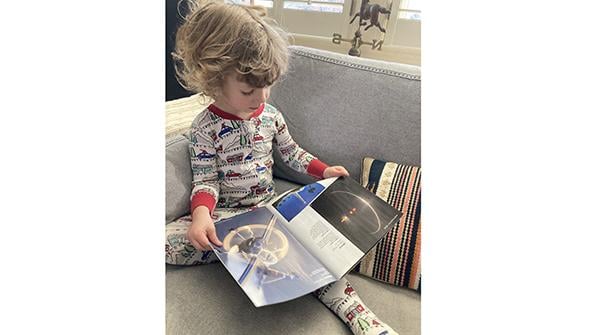Letters From Our Readers, Feb. 21, 2022

Adding It Up
Your chart “Boeing Leads Orders, Airbus Leads Deliveries in 2021” (Jan. 24-Feb. 6) has Boeing 777 2021 gross orders as 53 and net orders as 103—how is this possible?
John Rabkin, San Francisco
Editor’s note: The 2021 net orders figure is after accounting adjustments—aircraft that have now become more likely to be delivered are included in the count.
All in the Family
Aviation Week & Space Technology remains a huge hit in our house. The magazine is the perfect way for our son, JW, to explore his budding passion and curiosity. A bonus: The great content allows Mom and Dad to brush up on our aviation knowledge and handle the incoming “What’s that?” questions.
Katie Martin, Washington, D.C.
Flight Safety Essentials
Technological innovation and automation have improved flight safety, even performing better than humans such as in Category IIIb weather, in which landing the aircraft is allowed only with full automation. Different motivation influences the need for humans in the cockpit. Industry wants to reduce cost, and pilots are motivated by safety, since they are always the first at the scene of an accident.
The study of the need for two pilots versus one in the cockpit discussed in “Flying Solo” (Jan. 24-Feb. 6) reminded me of a Boeing 747 flight on which we lost two engines within minutes of each other after leveling off on a flight from Dubai to Hong Kong. The flight engineer was very, very busy going through the checklist, attempting two relights, while the copilot was also very busy checking the weather of the airports approaching the western coast of India. We were entirely WOXOF (ceiling and horizontal visibility 0 ft. with fog) and unable to communicate via high-frequency radio due to our necessary descent for the relight. My attempts to contact ground facilities on VHF radio were fruitless due to our distance from them. We were flying the plane off airways so as not to have a midair collision during the descent, and I was meanwhile monitoring and coordinating it all.
The situation was ultimately resolved via another aircraft’s pilots intercepting our emergency message and relaying it, and our getting two relights and climb authorization. Three humans were extremely busy adapting to an unanticipated situation.
One pilot alone in the cockpit of a fighter jet can handle it all by himself, but until all transport airplanes are equipped with ejection seats for the pilot (and passengers) when the situation gets out of control, it is best to keep two pilots in the cockpit for the unanticipated problems requiring judgment and coordination.
Automation is precise, but human judgment and coordination are still essential to flight safety.
U.S. Air Force Capt. (ret.), Jean-Claude Demirdjian, Los Angeles
Solo Is No-Go
The automation discussed in “Flying Solo” (Jan. 24-Feb. 6) is best suited to Part 135 single-pilot operations with autopilot authorization and general aviation owner-flown aircraft.
Just as active safety devices such as automatic braking are finding their way into cars faster than we expected, programs like the Garmin Autoland should and will become more common in general aviation.
However, considering single-pilot operation for transport-category aircraft is a big mistake for more reasons than those mentioned in the article.

Consider Egyptair Flight 990 on Oct. 31, 1999, and Germanwings Flight 9525 on March 24, 2015, which were crashed by the pilots flying them. A pilot should never be left alone in the cockpit.
Evidently, in this post-9/11 age, no one has a cockpit key that can override the electronic lock. Even if a suicidal pilot isn’t the issue, if one pilot takes a break and the pilot remaining has an incapacitating event with the door locked, the plane could fly on until fuel is exhausted—unless a flight attendant takes the place of the pilot on a break.
Second, if a pilot deviates from procedures or exhibits unusual behavior, it could be called to the attention of professional standards or the chief pilot in a well-organized operation. There is no opportunity for that in an operation where the pilot is almost always flying solo.
One reason the Germanwings pilot’s mental state remained hidden was due to German privacy laws, which could benefit from revision.
In the case where a pilot is resting, possibly sleeping, as on Air France Flight 447, it is not always possible to wake from sleep and immediately comprehend and successfully resolve an emergency situation. Having one pilot in the cockpit and the other in a rest status is unsatisfactory.
Barry Borella, Center Harbor, New Hampshire

